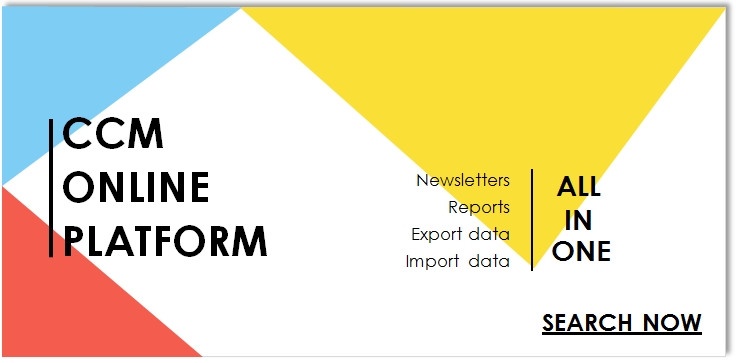Chinese government offers
increasing support to alfalfa planting recent years, with so far the growing
area of alfalfa for sale has exceeded 100,000 ha, and output in 2015
hit over 1.2 million tonnes. As the national strategy to
promote the planting of feed instead of grains is promoted nationwide, CCM predicts, alfalfa planting is expected to develop
better, further, benefiting the dairy farming industry.

Source:
Baidu
The development of alfalfa
planting means a lot to dairy farming industry. Xu Simin, editor of Dairy
Product China News, introduces that the production cost of milk in China is
about USD406-481.2/t, of which feed costs make up 60-70%, reflecting widespread
use of imported high-cost feeds. That’s one of the main reasons why China’s dairy
farming cost remains high for a long time.
Alfalfa is a key example:
currently China has become the world's large alfalfa importer. According to
China Customs, it imported 1.2 million tonnes in 2015, up by 37.2% YoY. In
January-May this year the volume of 552,900 tonnes was up by a further 26.8%
YoY. The imported alfalfa amount from the US made up 86.1% of the 2015 volume,
followed by Spain at 11.2%.
Amount of imported
alfalfa in China, 2011-2015

Source: China’s Customs
& CCM
Despite
the large planting area, in 2012 the area used to produce alfalfa for sale was
only about 60,000 ha, with an output of about 700,000 tonnes - a low
industrialisation level. Besides, the price of domestic alfalfa is about 70% of
the imported price of USD315/t in January-May 2016.
In
fact, in 2012 China has begun to promote the development of domestic forage grass
industry, such as alfalfa and oats, so as to lower the dependency for import
and production cost.
In
June 2012, China’s Ministry of Agriculture and Ministry of Finance jointly
implemented the “Alfalfa Development Plan for Developing the Dairy Industry
Vigorously” program: during the 3-year pilot scheme, the central government
allocated USD45.1 million each year to support the construction of high-yield
planting demonstration zones. A one-time subsidy of USD270, 700 was given for
every 200 ha as a unit, especially intended to promote premium varieties, the
application of improved production technology, the improvement of production
conditions and quality management.
The zones were mainly targeted
at areas with production advantage and high levels of dairying, covering 10
provinces/ municipalities/ regions: Heilongjiang, Jilin, Liaoning, Hebei,
Shaanxi, Gansu provinces, Inner Mongolia, Ningxia and Xinjiang autonomous
regions and Tianjin. The result was that the output of premium alfalfa for sale
in 2014 surpassed 1 million tonnes (vs. around 150,000 tonnes before), although
this was only able to meet feed demand from about 1 million milking cows.

Then in 2015 the government
issued the Central No.1 Document to accelerate the development of grass/
pasture industries: targets for 2020 include:
-
Total production of fresh grass/ pasture (incl. alfalfa, silage corn
and oats) on natural grassland of 1.1 billion tonnes
-
Vegetation coverage on grass land of 56%
-
Growing area of 23.3 million ha
-
Milk production (incl. goat/ cow milk, etc.) of at least 41 million
tonnes
All of them can be seen as a
sign of continuous support from government at present and in the future. So far
the growing area of alfalfa for sale has exceeded 100,000 ha, and output in
2015 hit over 1.2 million tonnes.
In
this context, more and more domestic dairying groups are increasing their focus
on domestic alfalfa. China Huishan Dairy Holdings Company Limited, Inner
Mongolia Saikexing Breeding and Reproductive Biotechnology (Group) Co., Ltd.
and China Modern Dairy Holdings Ltd., have all been promoting an integrated
“planting-farming-processing” business model for some time, making them the top
3 users of domestic alfalfa, with usage of at 83,000 tonnes, 75,000 tonnes and
34,900 tonnes respectively (produced and purchased combined).
Currently, the national
strategy to promote the planting of feed instead of grains is promoted
nationwide, since China cancelled the corn temporary reserve policy. Various
local governments are developing programs to put this strategy into effect. For
instance, Gansu Province plans to establish another 666,700 ha grass/ pasture
(producing mainly for sale) in the 13th Five-year Plan period
(2016-2020) - this includes bases of 66,700 ha premium alfalfa (for sale) in an
irrigated region and a 233,300 ha alfalfa (for sale), in an arid region.
More related information in CCM’s Online Platform

If you
want to know more about information about dairy in China, you can enter our Online Platform for it.
It mainly concludes:
• Newsletters: You to
catch the latest news about dairy industry, including the Suppliers, traders,
consumers, price, export, import and government policies and so on.
• Company profile: You can
get the detailed information of public and private Chinese companies within the
industry.
BOON: Now you can enjoy the free trial in the Online Platform for 7
days. If needed, welcome to contact us directly by emailing econtact@cnchemicals.com or
calling +86-20-3761 6606.
About CCM:
CCM is the
leading market intelligence provider for China’s agriculture, chemicals, food
& ingredients and life science markets. Founded
in 2001, CCM offers a range of data and content solutions, from price and trade
data to industry newsletters and customized market research reports. Our
clients include Monsanto, DuPont, Shell, Bayer, and Syngenta. CCM is a brand of
Kcomber Inc.
For more
information about CCM, please visit www.cnchemicals.com or get in touch
with us directly by emailing econtact@cnchemicals.com or
calling +86-20-37616606.
Tag: alfalfa feed dairy